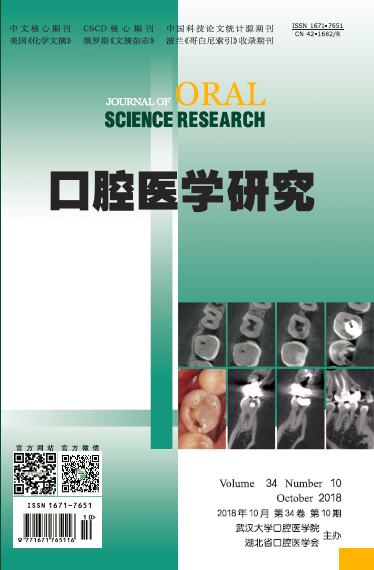|
|
Investigation and Analysis of Periodontal Health in Maintenance Hemodialysis Patients.
LI Xiao-li, CUI Zhuan, DING Fang.
2018, 34(10):
1081-1084.
DOI: 10.13701/j.cnki.kqyxyj.2018.10.012
Objective: To investigate the periodontal health status of maintenance hemodialysis patients, to provide effective treatment, and to prevent basis to periodontal disease in hemodialysis patients. Methods: A total of 1143 patients undergoing maintenance hemodialysis at the Dialysis Center of the Third Hospital of Peking University from June 2017 to February 2018 were selected as study subjects. The periodontal health status was examined and divided into mild periodontal disease group (Group A, 368 cases) and moderate and severe periodontal disease group (Group B, 567 cases) according to the severity of periodontal disease. Univariate and multivariate analysis were used to determine the risk factors for periodontal disease in maintenance hemodialysis patients. Results: Of the 1143 maintenance hemodialysis patients in this study, 208 (18.20%) had good periodontal health, 368 (32.20%) had mild periodontal disease, 392 (34.30%) had moderate periodontal disease, and 175 (15.30%) patients with severe periodontal disease. Univariate analysis showed a statistically significant difference between the two groups in terms of body weight, smoking, regular oral care, daily brushing, length of brushing, diabetes mellitus, dialysis time, dialysis frequency, and albumin levels (P<0.05). Further multivariate analysis showed that the duration of dialysis, frequency of dialysis, and diabetes mellitus were risk factors for increased periodontal disease in maintenance hemodialysis patients (P<0.05). Conclusion: Maintenance hemodialysis patients have varying degrees of periodontal disease. For patients with longer dialysis time, frequent dialysis and patients with diabetes should pay close attention to maintenance hemodialysis patients. The doctor should provide reasonable guidance for the periodontal hygiene of patients and avoid increasing periodontal disease conditions.
References |
Related Articles |
Metrics
|

